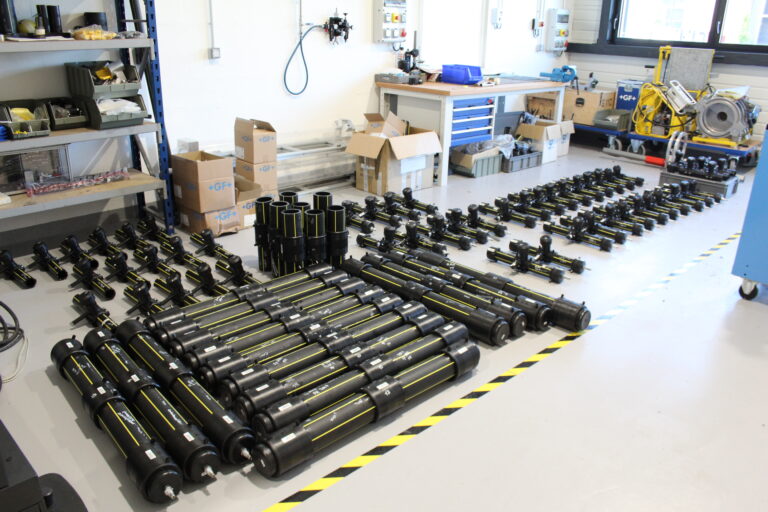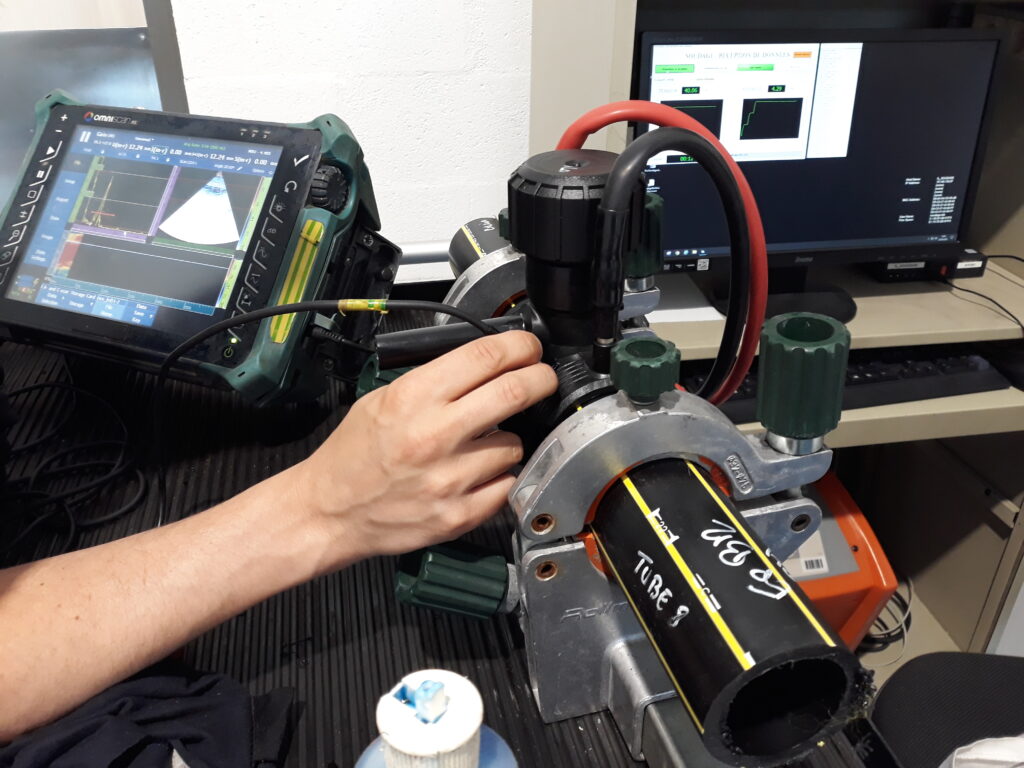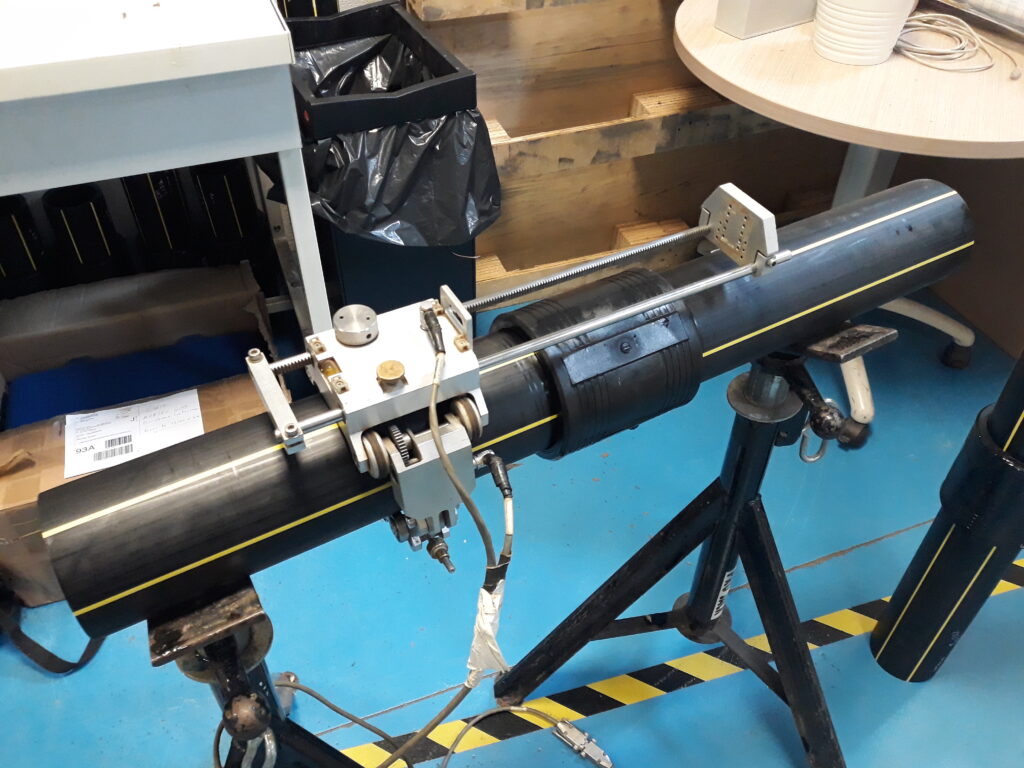

In the gas distribution and polyethylene (PE) piping infrastructure industry, weld reliability is essential to ensure the safety and longevity of networks. Non-destructive testing (NDT) methods play a crucial role in controlling joint quality. Among these methods, multi-element ultrasonic testing (MEUT) stands out as a proven reference technique for the assessment of polyethylene pipes and joints, whether produced by electrofusion or butt welding.
At the request of GRDF DTI, NaTran R&I has carried out the study on which the proposed communication to the Journal of Nondestructive Evaluation is based, subcontracting the multi-element ultrasonic (PAUT) part to the Institut de Soudure (Villepinte), with which NaTran R&I ex RICE has been collaborating for some twenty years. This basic study is part of the OPTISE / PE & Polymers program. Its overall aim is to consolidate the PAUT technique for "health" testing of polyethylene (PE) pipes and welded joints used in fluid distribution networks, with the ultimate aim of correlating PAUT testing with the residual mechanical performance of pipes.
The effectiveness of the PAUT technique for inspecting PE pipes and welds
Multi-element ultrasonic testing (PAUT) enables defects in polyethylene pipes and welds to be detected and sized with pinpoint accuracy. This advanced technology uses piezoelectric transducers arranged in "arrays" that generate ultrasonic beams at different angles and depths to provide a detailed view of heat-affected zones and internal defects.
Studies carried out in several laboratories around the world have shown that the PAUT technique is particularly effective for locating and sizing surface and volumetric defects in tubes and electro-welded joints. These defects must then be correlated with residual long-term performance by means of destructive tests, such as hydrostatic pressure resistance tests and decohesive strength tests.
Practical applications and results
Recent research has validated the PAUT technique for the inspection of 63 mm and 110 mm diameter electro-welded tube assemblies used in gas distribution. Defects are artificially created in the laboratory prior to welding, and include insufficient heating times, incomplete penetration of the tube into a sleeve, contamination by pollutants, or the integration of non-weldable zones calibrated using fine lamellae deposited at the tube-sleeve and tube-socket interface.
The results presented in this international publication confirm that the PAUT technique can effectively detect and measure the heat-affected zone (HAZ) at the weld interface, as well as the different types of defects created in assemblies. This information is then cross-referenced with mechanical test data on control specimens to establish acceptance criteria.


Acceptance criteria and standards
In order to ensure weld quality, acceptance criteria must be defined for any defects detected. The mechanical tests carried out to date show that the various assemblies meet the requirements of the standards in force (NF EN 1555 and ISO 13956), even for the most critical defects created within the scope of this study.
Multi-element ultrasonic testing (MEUT) represents a major advance in the quality assessment of polyethylene pipes and welded joints. Thanks to this technique - whose portability in the field has also been demonstrated - it is now possible to detect and measure various families of defects with correct accuracy. However, the influence of these families of defects on long-term residual performance has yet to be statistically consolidated over a larger number of tests, and the relevance of the thresholds required in the standards needs to be considered in parallel.
You can consult the complete works by following this link.